Last-Minute NYC Holiday Gift Guide 🎁
We’ve created a holiday gift guide with presents for the intrepid New Yorker that should arrive just in time—


A chance meeting would allow photographer Marisa Scheinfeld to photograph the abandoned Breezy Corners Bungalow Colony, an abandoned Borscht Belt resort, just days before it was completely torn down. While working on her book The Borscht Belt: Revisiting the Remains of America’s Jewish Vacationland, Scheinfeld visited the Breezy Corners site to find it scattered with construction vehicles and equipment. “I debated driving away and going back at another time…but the lighting was so good I took a chance and got out to speak to the workers,” recalls Scheinfeld. And, luckily, she did. A high school friend who happened to be working at the site introduced her to his boss, whom she convinced to allow her to photograph the property. Just days later, there would be no trace of Breezy Corners, a popular summer community in the Catskills that was in operation from the 1950s until 2008. Here, Sheinfeld shares a selection of images from her shoot that day, some that are previously unseen and didn’t make it into her book!
In our upcoming virtual talk with photographer Marisa Scheinfeld, you can learn more about the abandoned resorts of the Borscht Belt and see stunning photographs from her book!
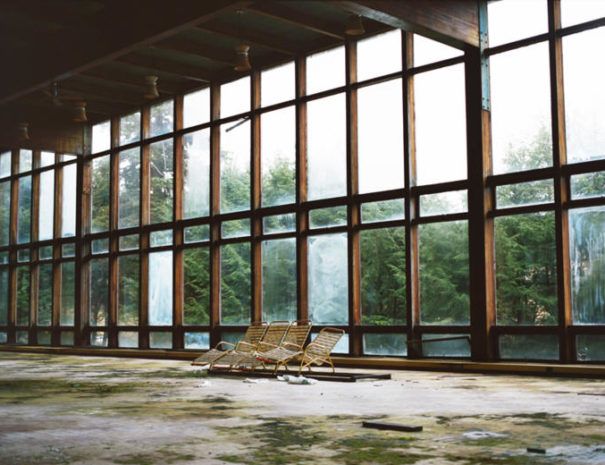
Abandoned Resorts of the Borscht Belt
The Breezy Corners Bungalow Colony site, along Joyland Road in the town of Monticello, New York, has a long history as a hospitality destination. The first wave of tourists came to the Catskills in the mid-1800s when the region’s natural beauty was discovered and romantically painted by the Hudson River School artists. Seeing an opportunity, many 19th-century Catskills residents began renting out their properties to summer revelers. In 1848, the land on which Breezy Corners would later be built was owned by Walker Willets. Like many of his fellow Catskills residents, Willets turned one of the buildings on his farm into a boarding house. WL Willets Boarding House’s 10-rooms, well-stocked ponds, and “excellent livery accommodations” were featured in a travel guide of “Picturesque Erie Summer Homes” from 1890, cited in an archaeological field investigation report of the site conducted in 2013. (The study also found interesting remnants of farmhouse buildings and a historic dumping site!) After Willets died in 1897, his widow, daughter, and son-in-law continued to operate the boarding house.
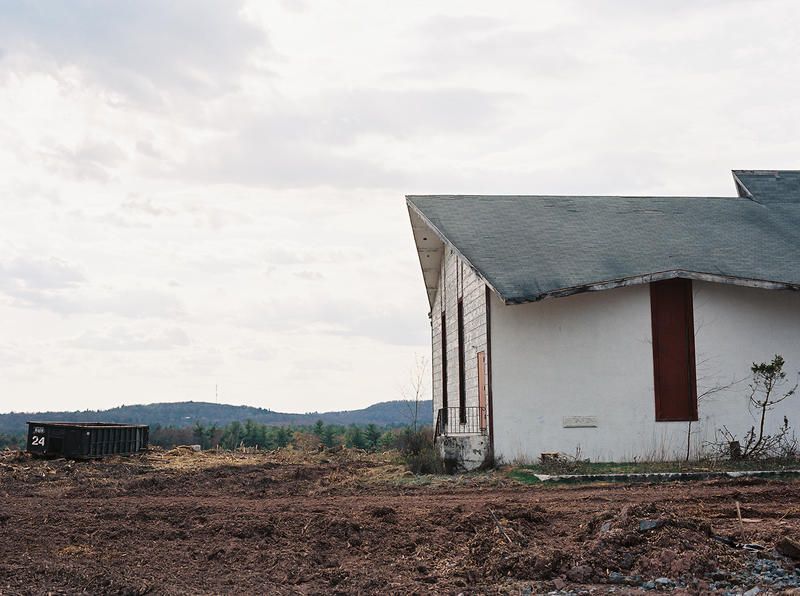
The city-dwellers seeking solace in the mountains of upstate New York at this time included many eastern European Jewish families. Unfortunately, prevalent anti-Semitism caused many hotels and inns to turn away Jewish customers. As a result, Jewish people began to build their own private hotels, boarding houses, and bungalow colonies in the area. The abundance of Jewish tourists flocking to the Catskills steadily grew throughout the 20th-century, and the area acquired nicknames like the Borscht Belt and the Jewish Alps.
The next Catskills tourism boom came with the post-war era of the 1950s and 1960s. According to the Sullivan Historical Society, by 1952, there were 509 boarding houses and hotels located in Sullivan County. That year, Bronx natives Edith and Samuel Miller began to construct the Breezy Corners Bungalow Colony.

Breezy Corner was made up of one and two-bedroom bungalows that families could rent for the entire summer. Guests could swim in the Olympic size pool, enjoy a hot meal at the luncheonette, or play a round of golf at the nearby course run by the Concord Resort Hotel. The Concord Resort Hotel was the largest resort in the Borscht Belt and one of the last to close. A brochure for the colony from 1985 advertises all-night karaoke parties, sporting facilities, weekly bingo and a variety of activities to keep the kids occupied.
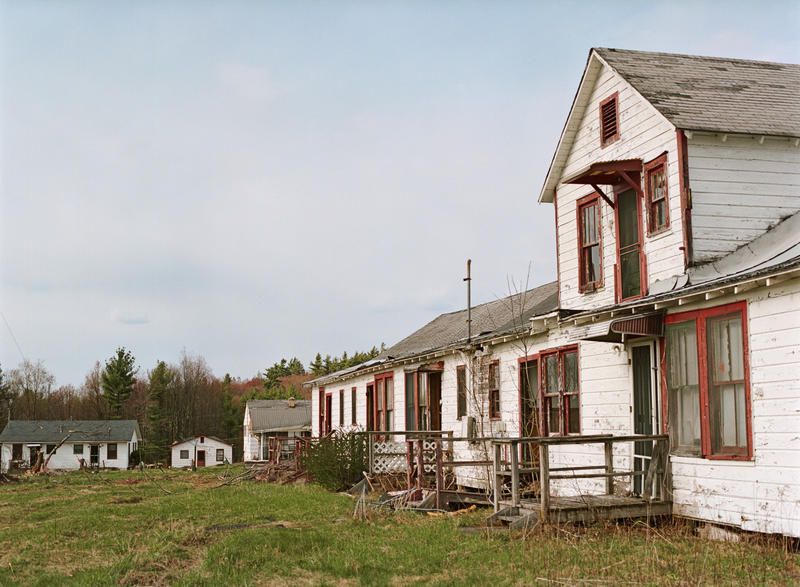
Breezy Corners also had its own club called The Revolution. On the stage, vacationers could see some of the biggest names of the 1960s and 1970s music scene including Jethro Tull, Jeff Beck, Joe Cocker, and Fleetwood Mac. Scheinfeld says she has heard that Led Zeppelin once played in a Borscht Belt resort as an opening act. While we haven’t been able to confirm for certain if or where the British band played, “Zeppelin” is listed as an upcoming act on a poster from The Revolution.

In 2008, Breezy Corners’ bungalows were still full of summertime leisure seekers when eviction notices were handed out. Summer residents, some who had been coming up to the Catskills their entire lives, were forced to give up their bungalows to make way for new development. After the forty families of Breezy Corners left, the site sat deserted for ten years. Just days after Scheinfeld’s visit, when she took the photos in this article, the community was torn down completely. The former site of Breezy Corners is part of a large redevelopment plan for the Concord Hotel property. which includes the Resorts World Catskills, a casino resort opened on the property in 2018. In place of the quaint white, 1950s bungalows, a new “Entertainment Village” will rise. Joyland Road, the community’s former address, is now Resorts World Drive.
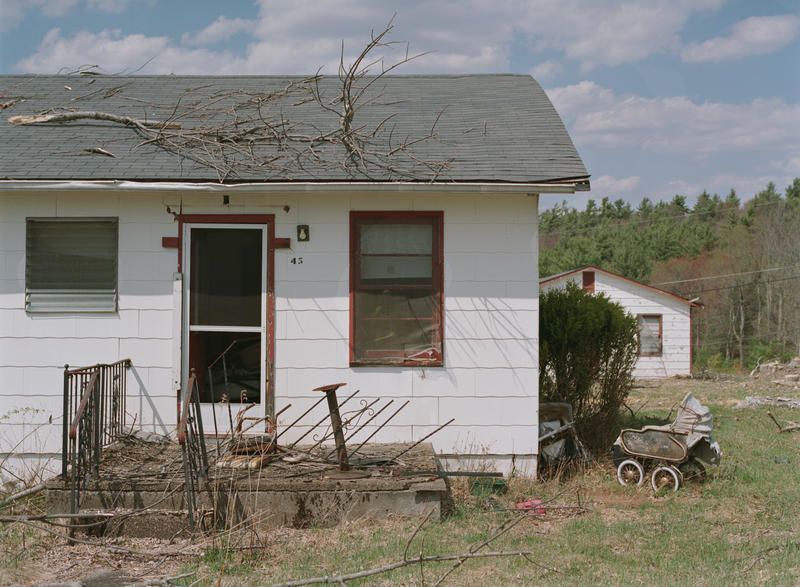
To uncover more stories about the abandoned and lost resorts of the Borscht Belt, join photographer Marisa Shenfeld for a virtual talk on April 13th! Tickets to this virtual talk are just $10. You can gain access to unlimited free virtual events per month and unlock a video archive of 100+ past virtual experiences as an Untapped New York Insider starting at $10/month. Already an Insider? Register here! If you can’t make it live, register for this event and we will send you a link to the recording once it airs!
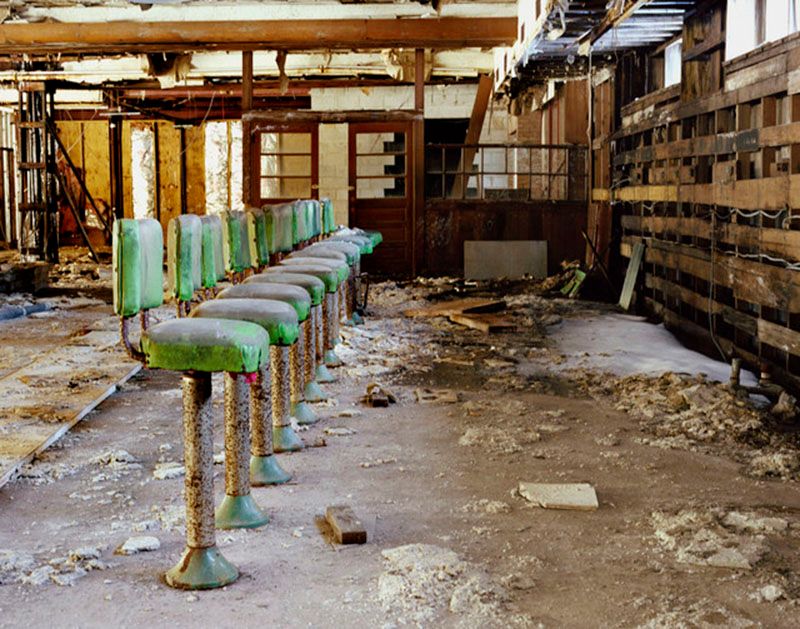
Abandoned Resorts of the Borscht Belt
Next, check out 10 Abandoned Resorts of the Borscht Belt from The Borsch Belt: America’s Jewish Vacationland in Catskils, New York
Subscribe to our newsletter